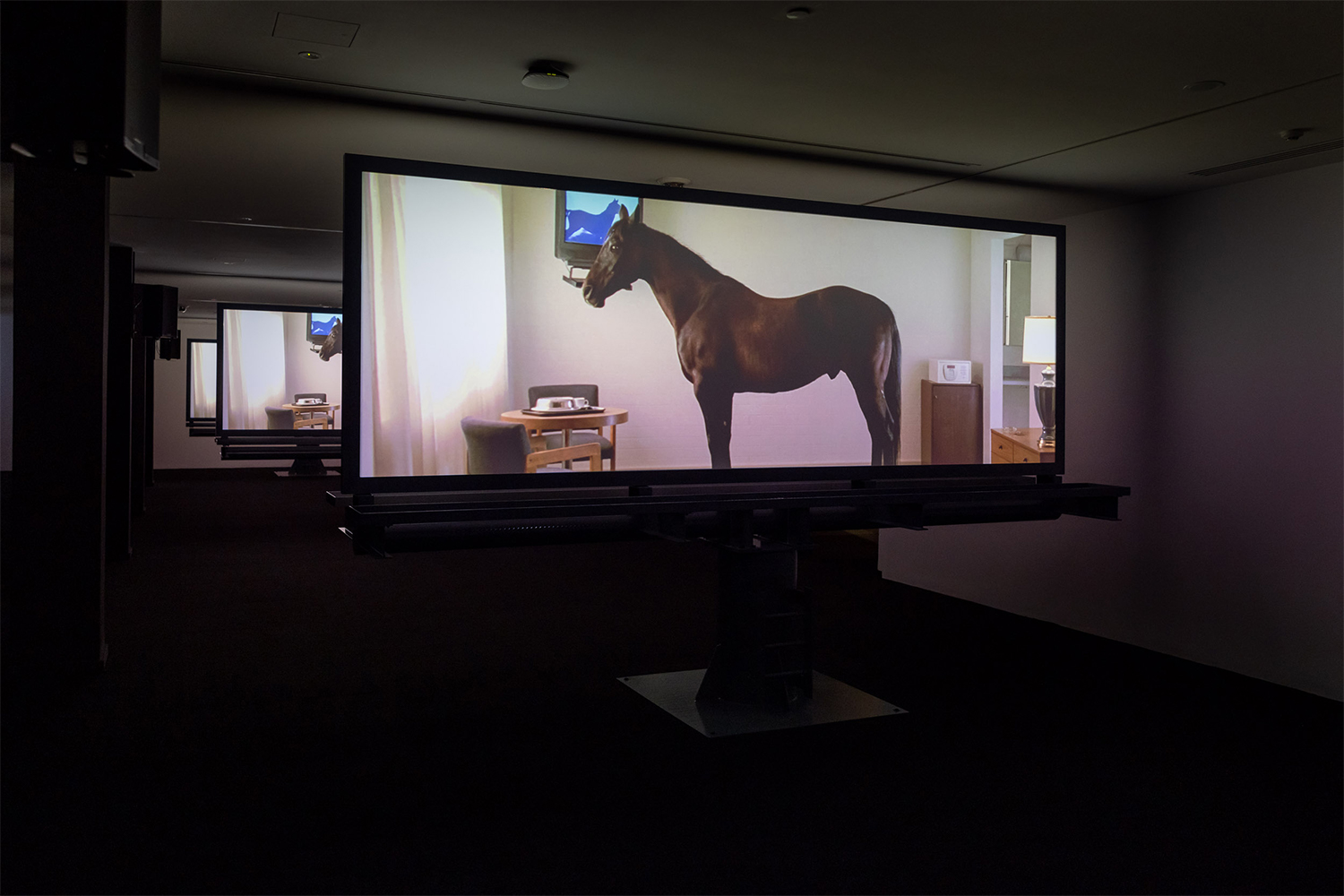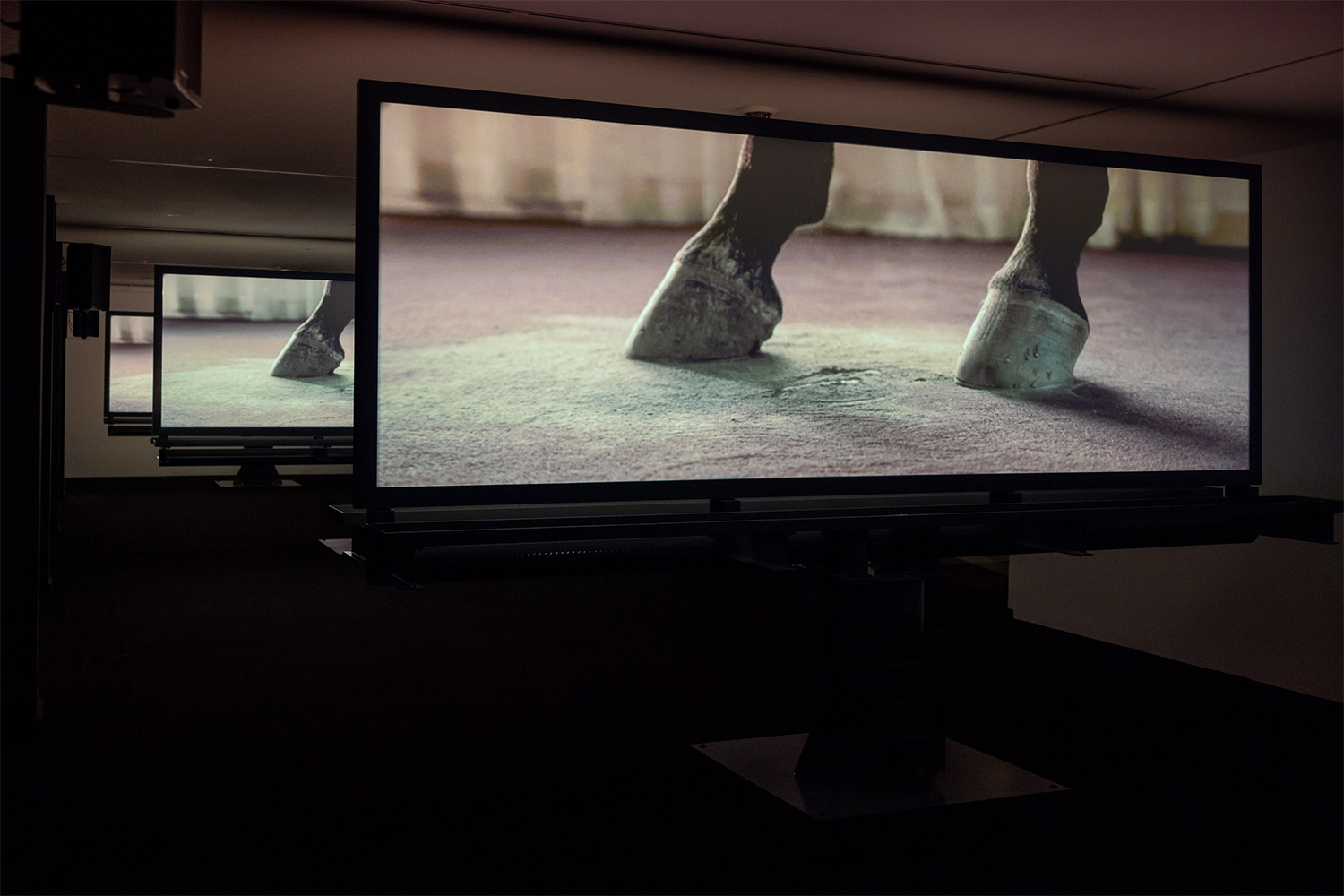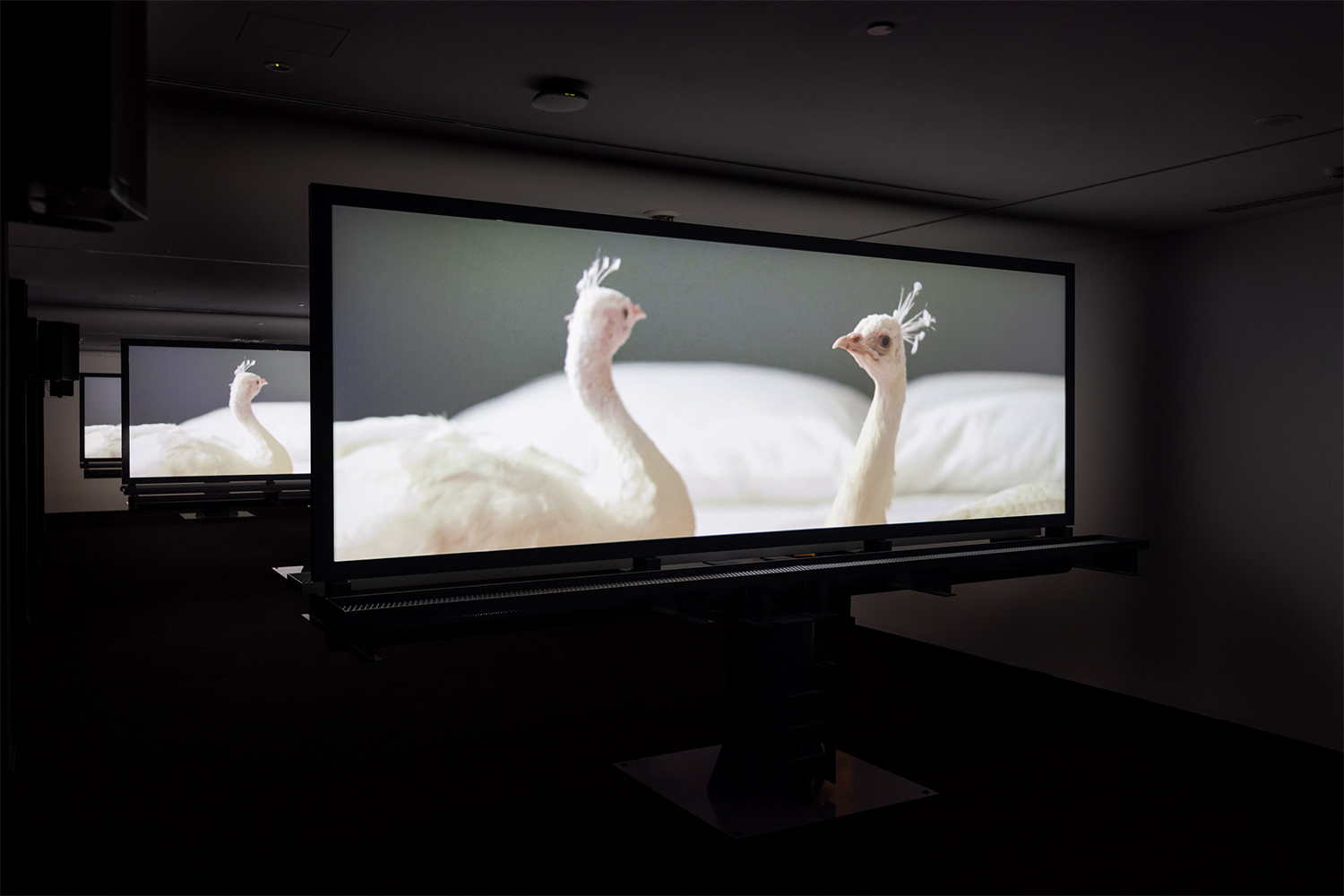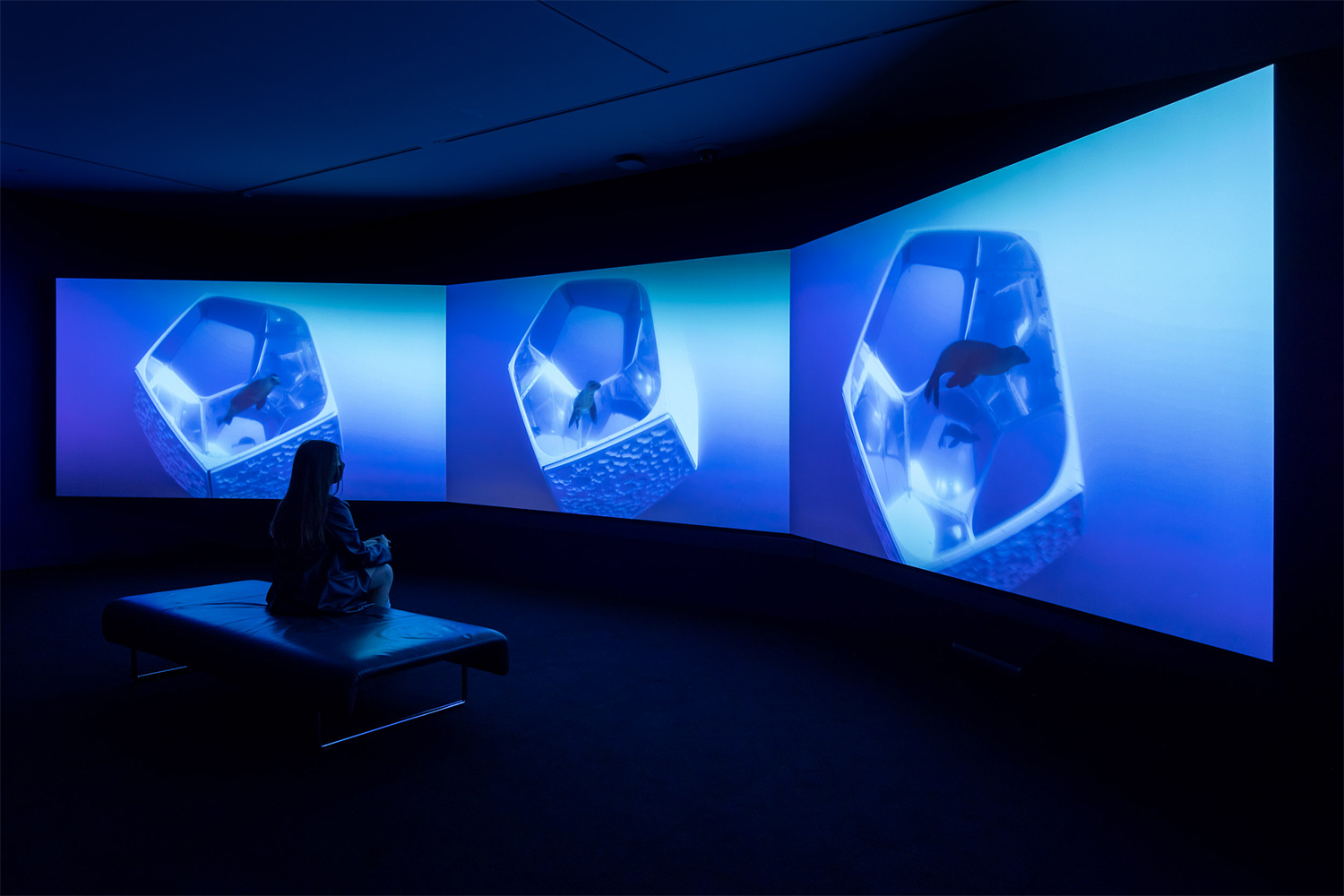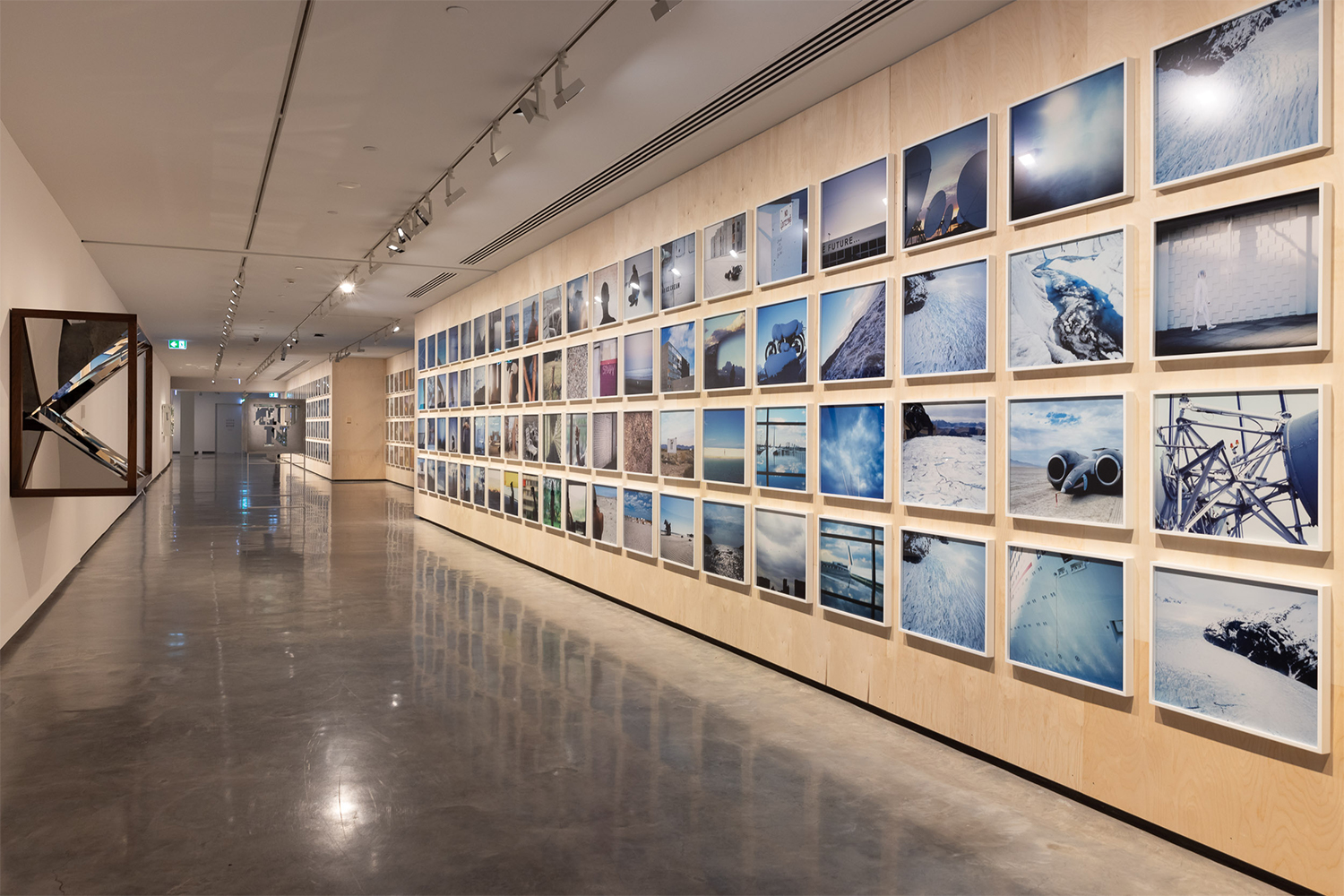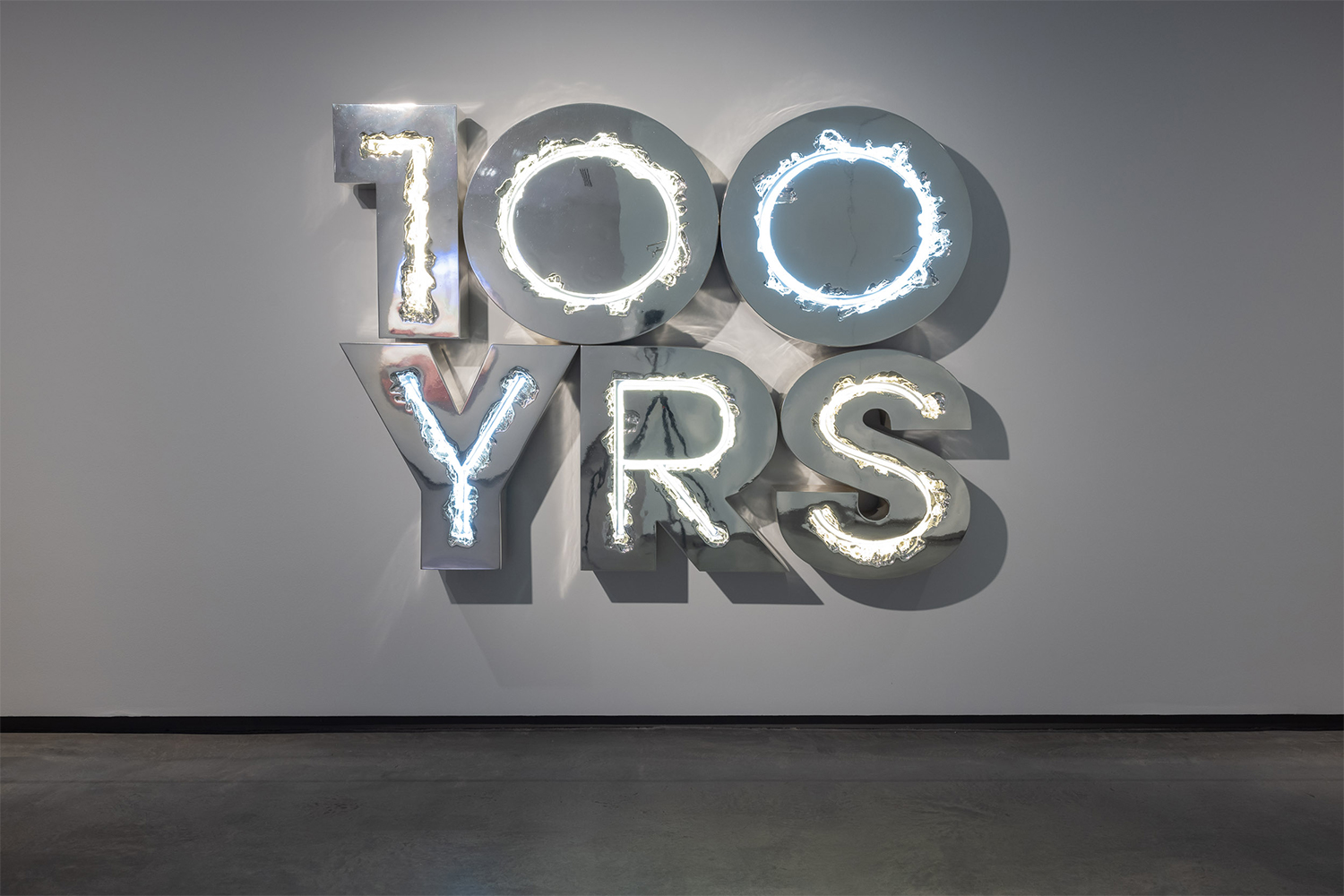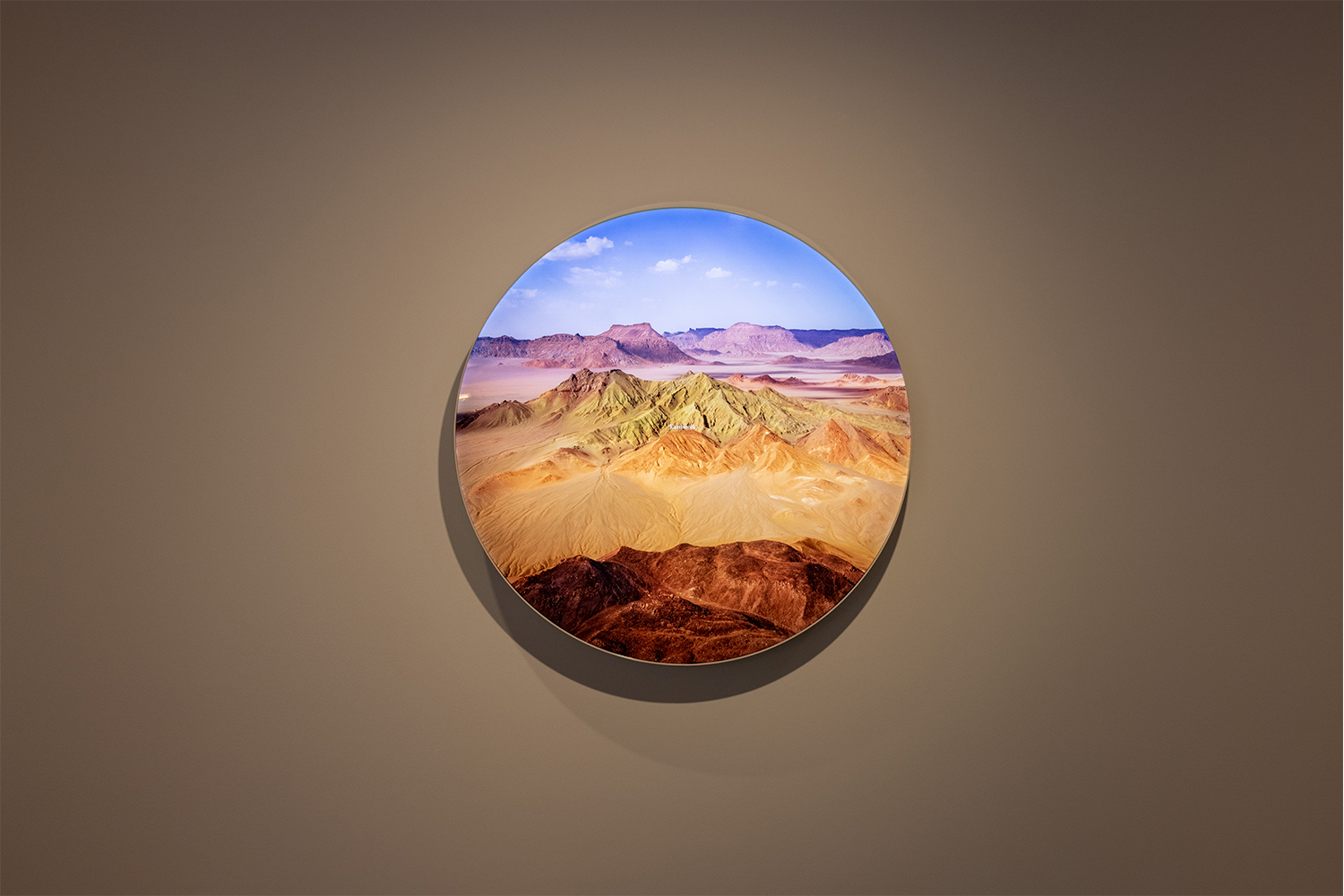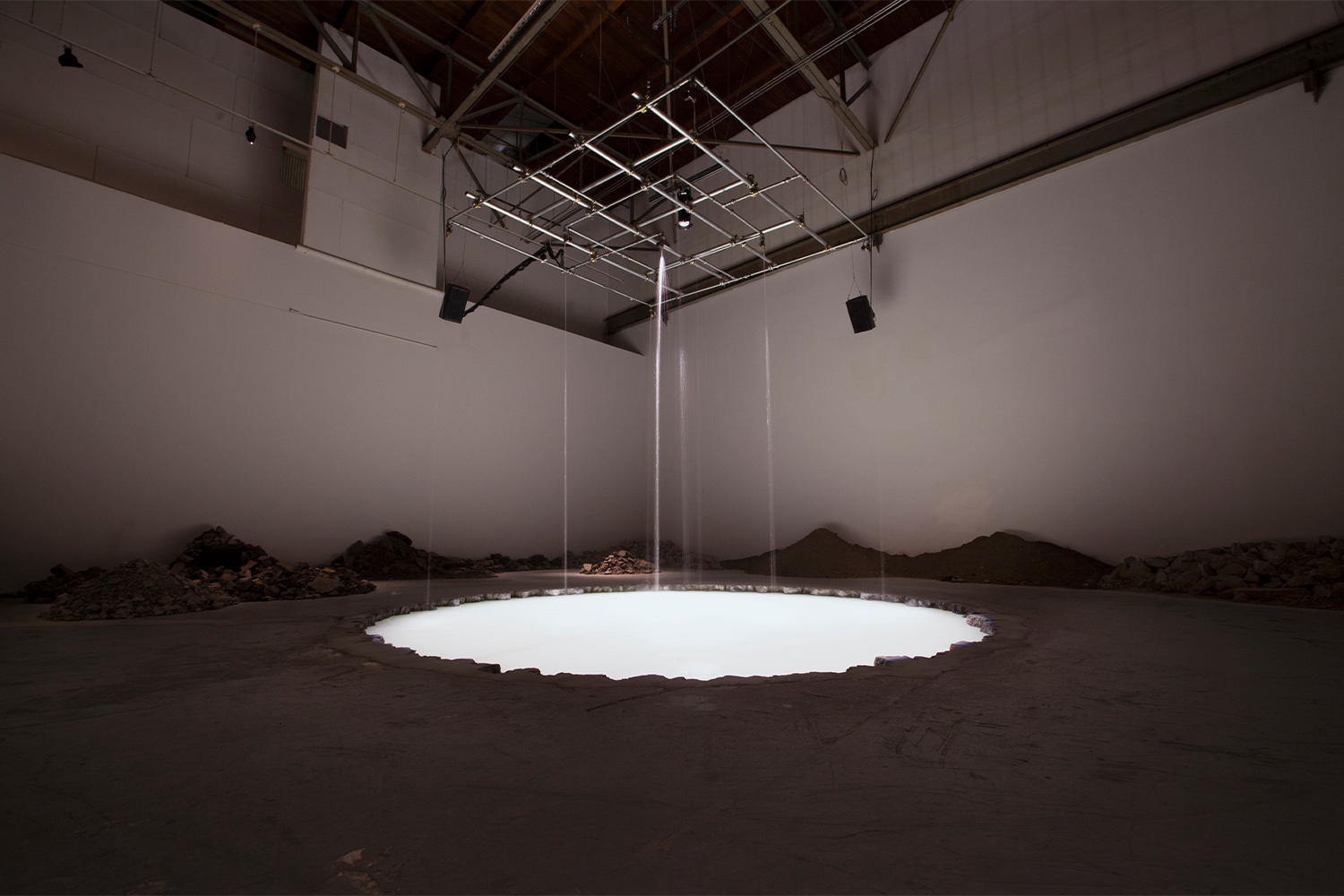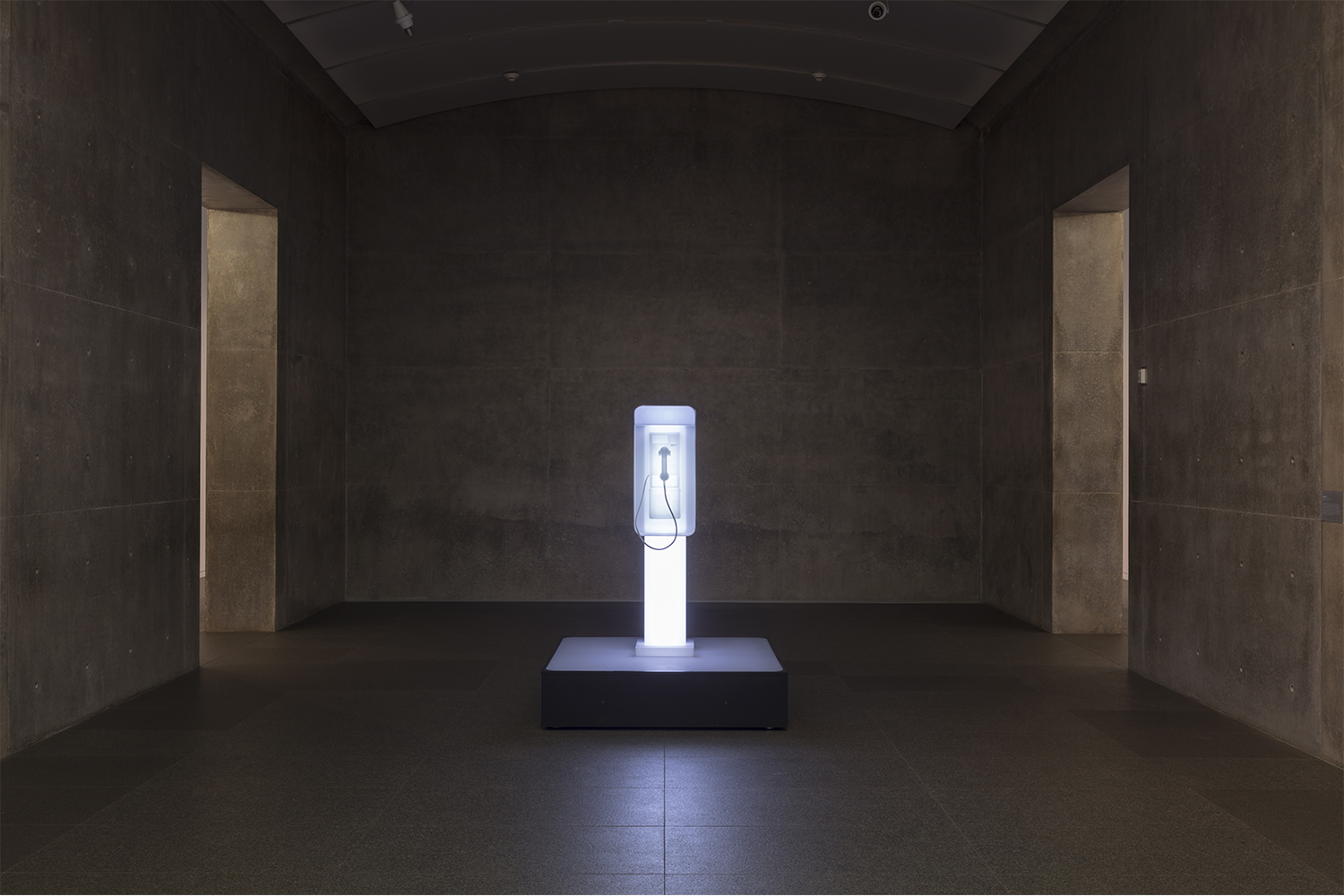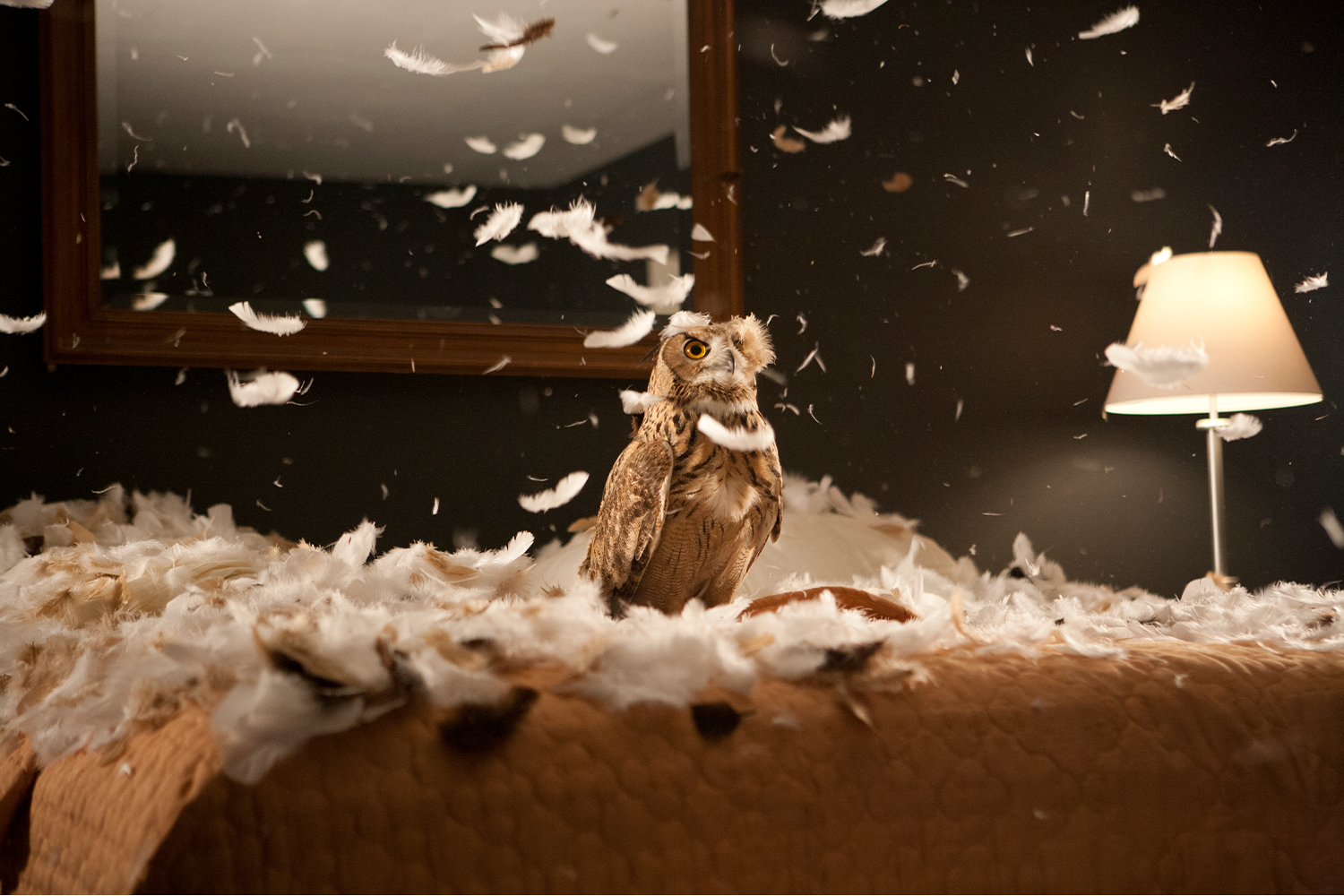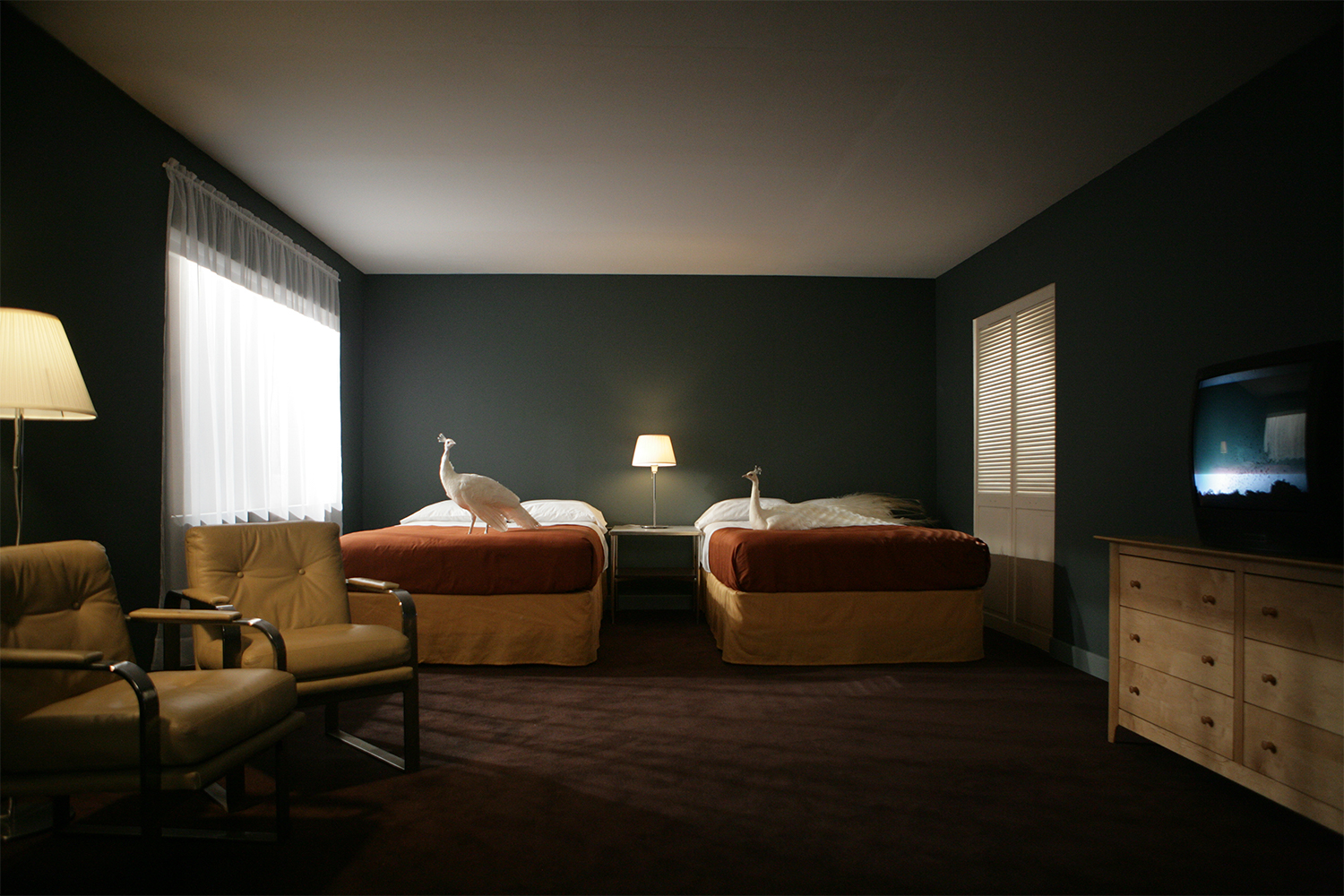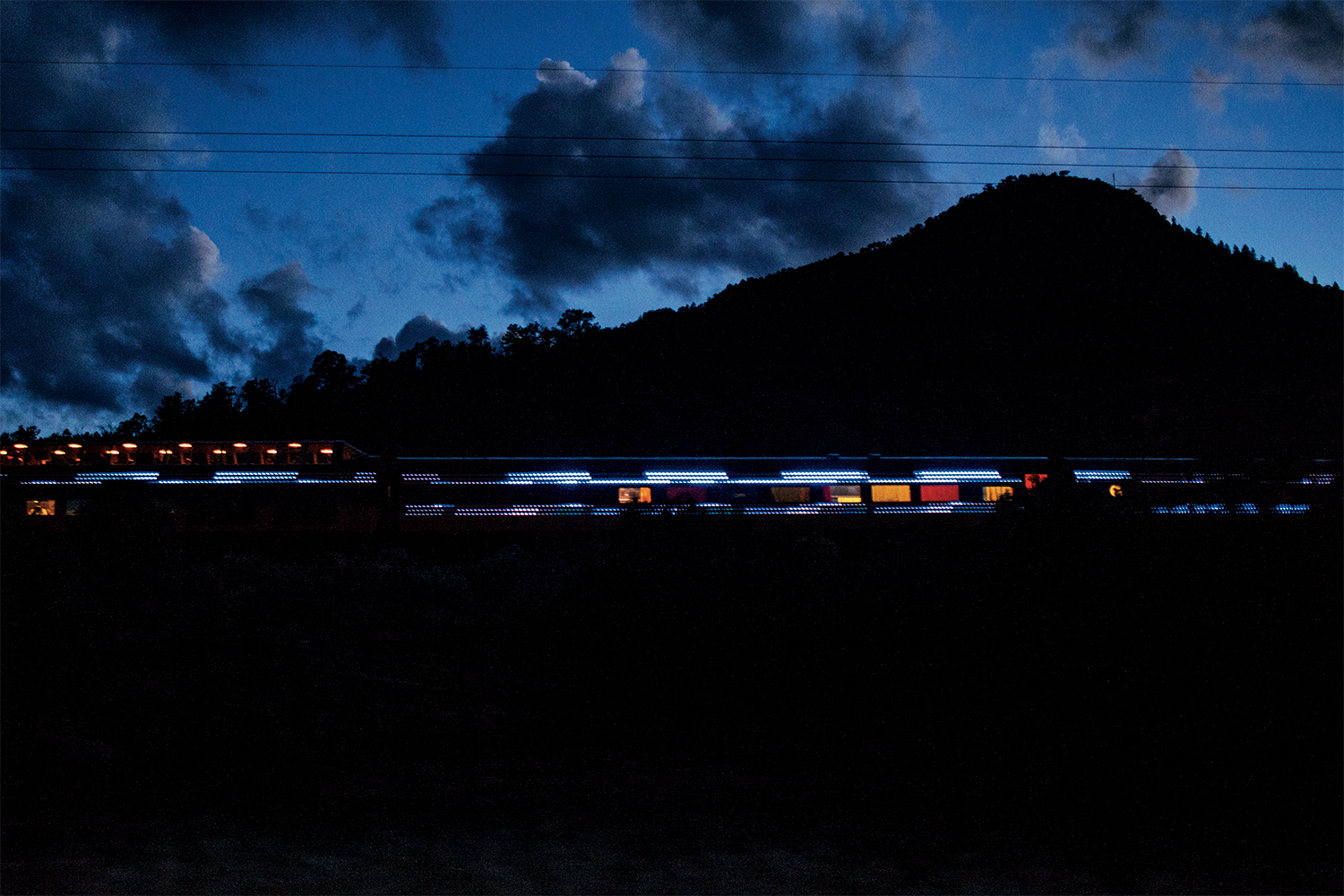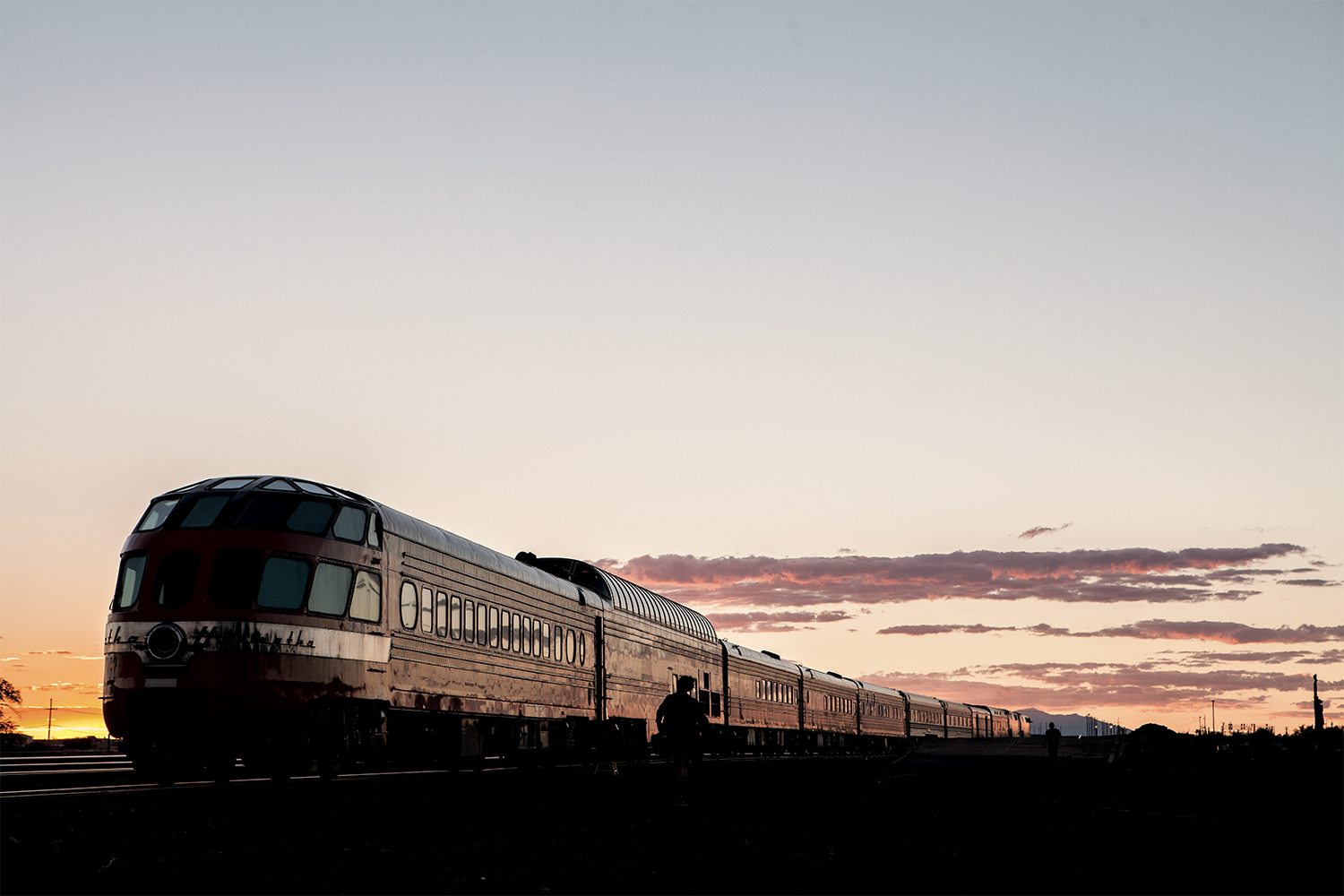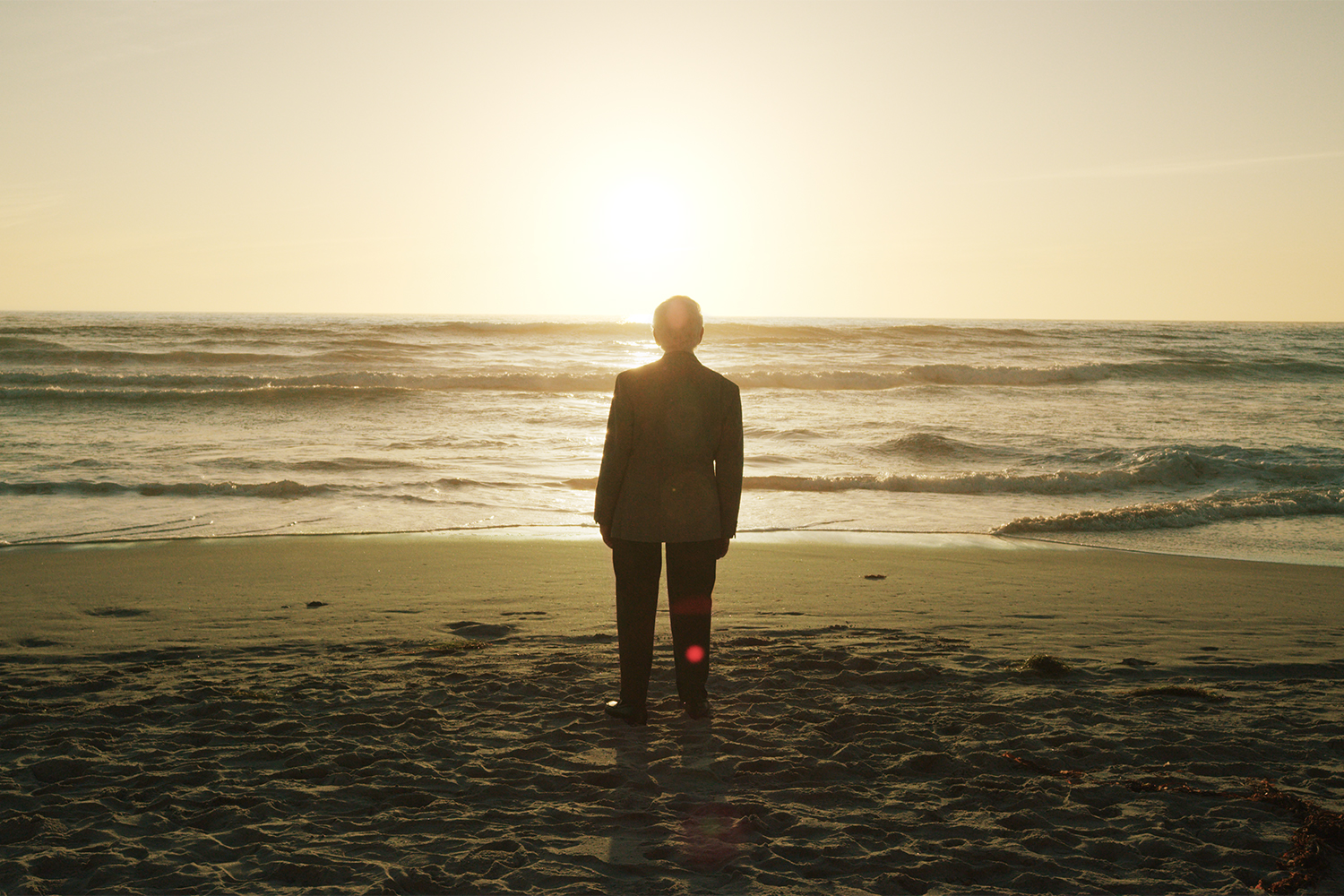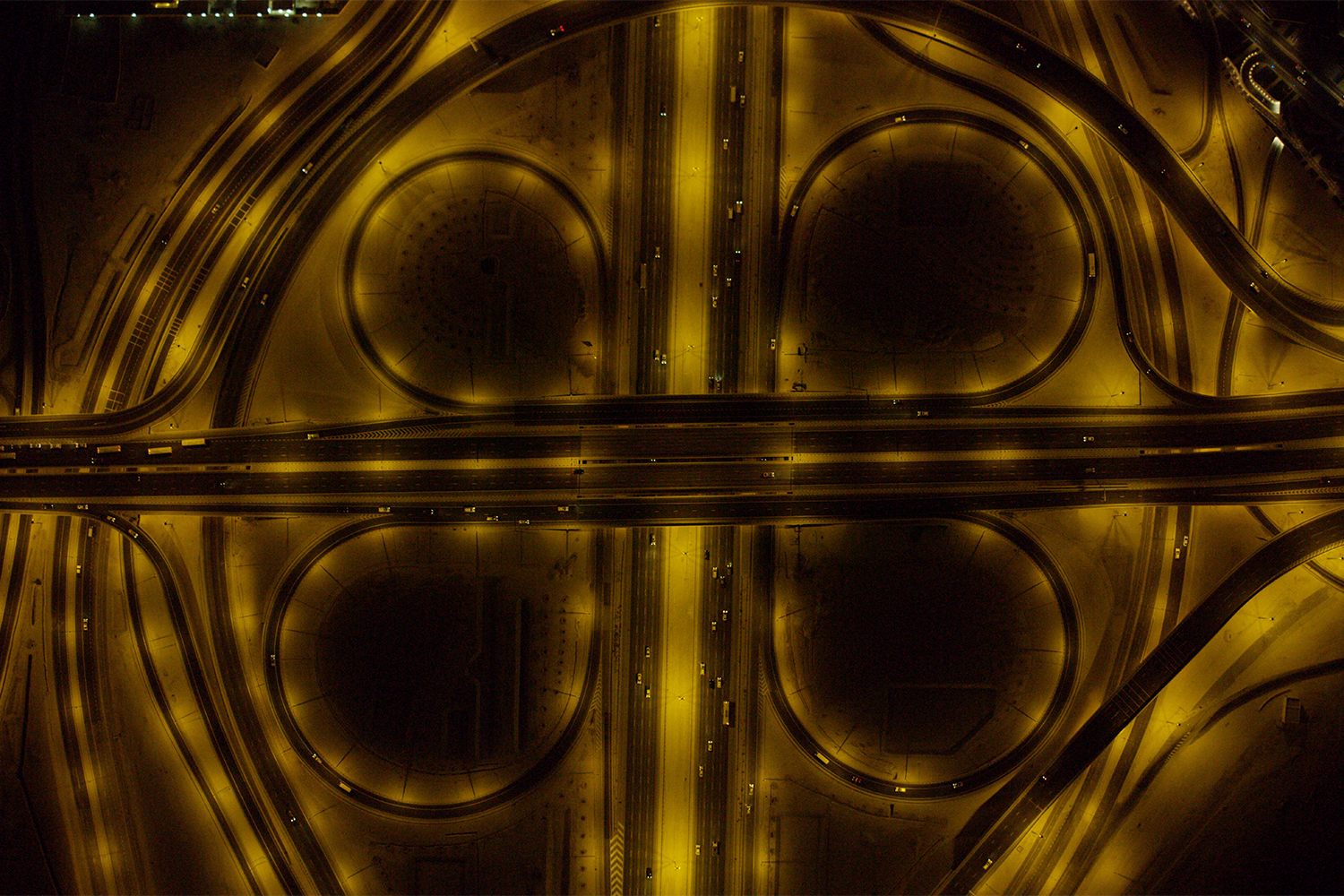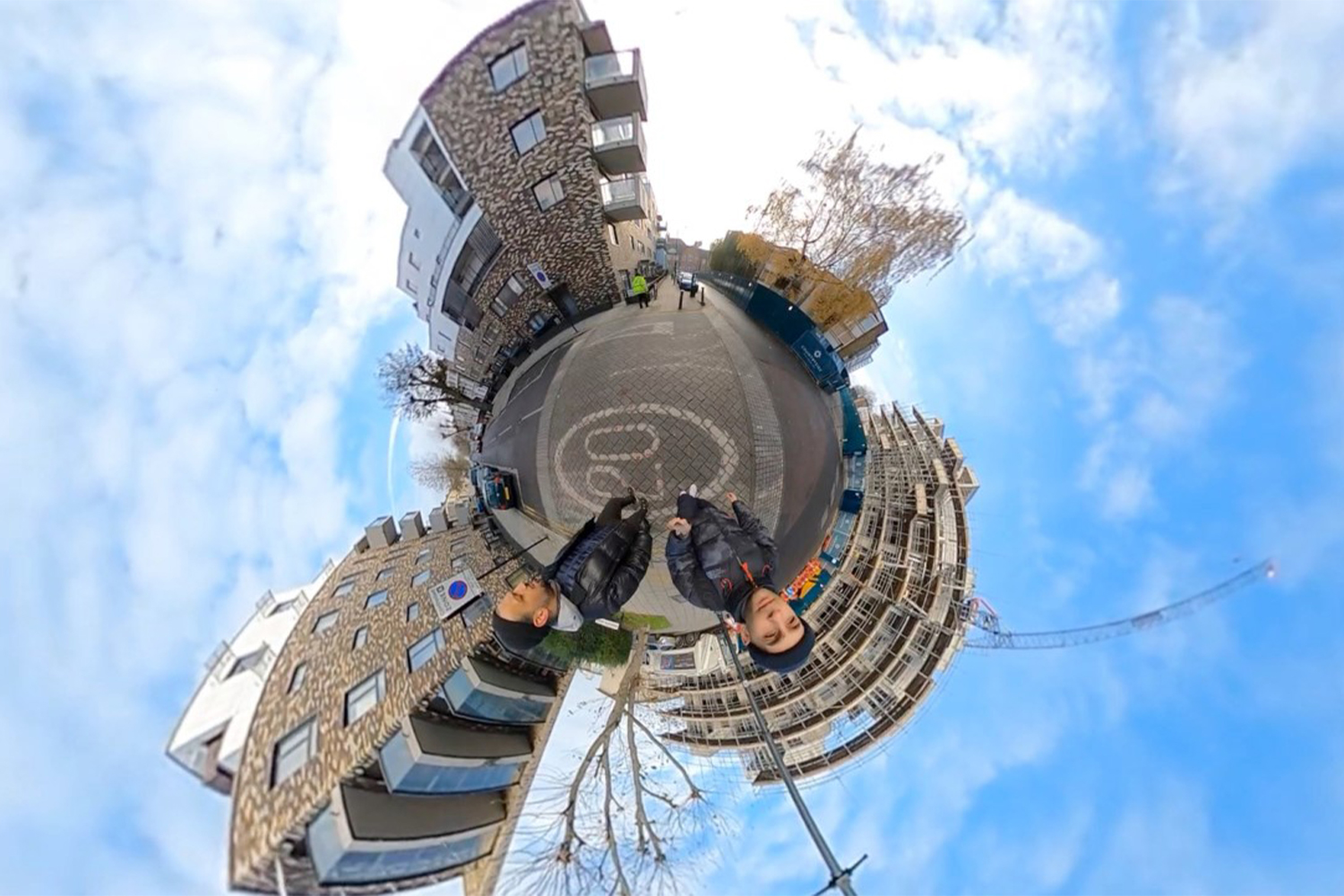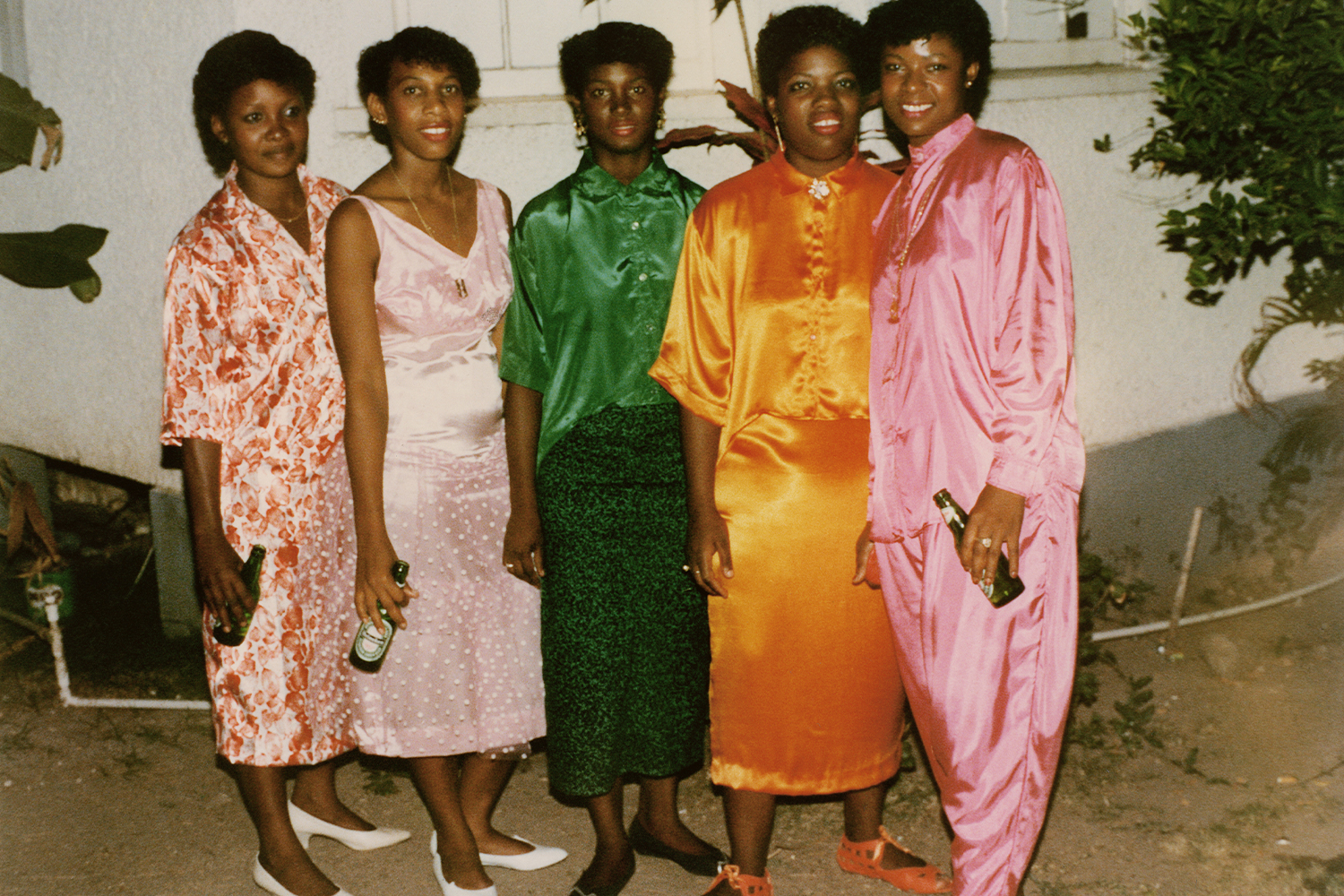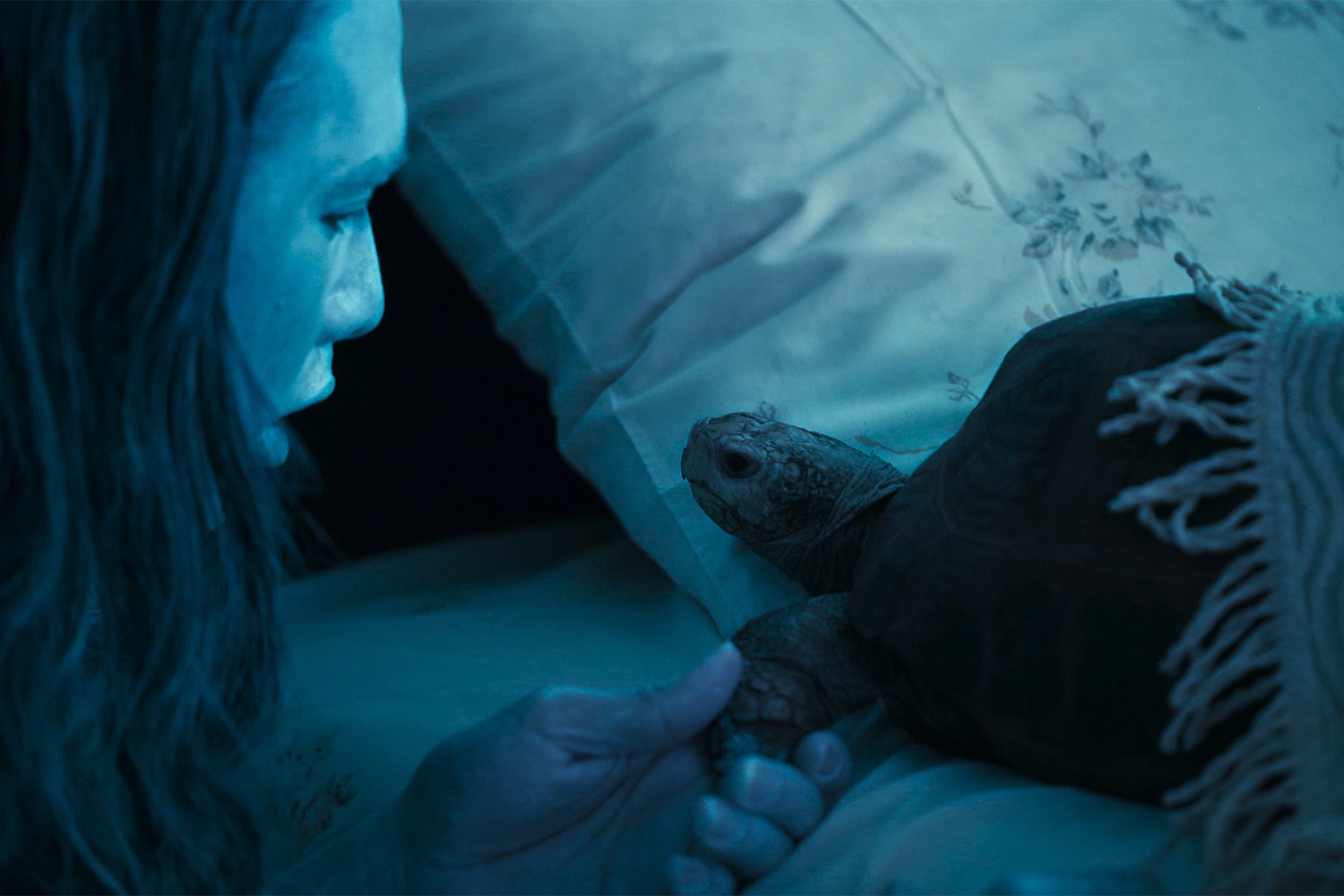Doug Aitken, NEW ERA, 2018. Installation view at MCA – Museum of Contemporary Art, Sydney, 2021. Photography by Dan Boud. Courtesy of the artist; MCA – Museum of Contemporary Art, Sydney; 303 Gallery, New York; Galerie Eva Presenhuber, Zurich; Victoria Miro Gallery, London; and Regen Projects, Los Angeles.
© Doug Aitken.
Doug Aitken, migration (empire), 2008.
Installation view at MCA – Museum of Contemporary Art, Sydney, 2021.
Photography by Dan Boud.
Courtesy the artist; MCA – Museum of Contemporary Art, Sydney; 303 Gallery, New York; Galerie Eva Presenhuber, Zurich; Victoria Miro Gallery, London; and Regen Projects, Los Angeles. © Doug Aitken.
Doug Aitken, migration (empire), 2008. Installation view at MCA – Museum of Contemporary Art, Sydney, 2021. Photography by Dan Boud. Courtesy the artist; MCA – Museum of Contemporary Art, Sydney; 303 Gallery, New York; Galerie Eva Presenhuber, Zurich; Victoria Miro Gallery, London; and Regen Projects, Los Angeles. © Doug Aitken.
Doug Aitken, migration (empire), 2008. Installation view at MCA – Museum of Contemporary Art, Sydney, 2021. Photography by Dan Boud. Courtesy the artist; MCA – Museum of Contemporary Art, Sydney; 303 Gallery, New York; Galerie Eva Presenhuber, Zurich; Victoria Miro Gallery, London; and Regen Projects, Los Angeles. © Doug Aitken.
Doug Aitken Underwater Pavilions (installation), 2017. Installation view at MCA – Museum of Contemporary Art, Sydney, 2021.
Photography by Dan Boud.
Courtesy the artist; MCA – Museum of Contemporary Art, Sydney; 303 Gallery, New York; Galerie Eva Presenhuber, Zurich; Victoria Miro Gallery, London; and Regen Projects, Los Angeles. © Doug Aitken.
Doug Aitken, “New Era”. Installation view at MCA – Museum of Contemporary Art, Sydney, 2021.
Photography by Dan Boud.
Courtesy the artist; MCA – Museum of Contemporary Art, Sydney; 303 Gallery, New York; Galerie Eva Presenhuber, Zurich; Victoria Miro Gallery, London; and Regen Projects, Los Angeles. © Doug Aitken.
Doug Aitken, 100 YRS (neon), 2014. Installation view at MCA – Museum of Contemporary Art, Sydney, 2021. Collection of Scott and Yael Braun.
Photography by Dan Boud.
Courtesy the artist; MCA – Museum of Contemporary Art, Sydney; 303 Gallery, New York; Galerie Eva Presenhuber, Zurich; Victoria Miro Gallery, London; and Regen Projects, Los Angeles. © Doug Aitken.
Doug Aitken, Earthwork: Aperture series, 2019.
Installation view at MCA – Museum of Contemporary Art, Sydney, 2021. Photography by Dan Boud. Courtesy the artist; MCA – Museum of Contemporary Art, Sydney; 303 Gallery, New York; Galerie Eva Presenhuber, Zurich; Victoria Miro Gallery, London; and Regen Projects, Los Angeles. © Doug Aitken.
With the opening of his latest exhibition, “New Era,” at the Museum of Contemporary Art in Sydney, American artist Doug Aitken heralds the cultural and social paradigm shifts that are symptomatic of the times that we live in. The exhibition is an ambitious survey of the artist’s extensive body of work, encompassing video, photography, sculpture, and installation-based pieces. It is a project three years in the making, envisioned as a kaleidoscopic composite of moving imagery and sound.
“New Era” takes its title from one of the key works in the show, a multichannel installation exploring the landscape of the present by looking to the past. Entering via a dark corridor, the viewer is presented with three mirrored screens within a hexagonal room. The central protagonist of the video is an elderly man who the audience may not recognize as Martin Cooper, the inventor of the mobile phone. His invention was the catalyst for a new kind of nomadic existence for humankind, untethered by cables yet constantly connected to one another at any given time. The screens oscillate between the micro and macro: from footage of Cooper to images of computer chips and grains of sand, to sweeping landscape images of mountainous canyons and telecommunications towers.
Thematically, the work is especially relevant in light of recent global experiences of extended lockdown during the COVID-19 pandemic, a phenomenon that has accelerated a collective reliance on phone and computer screens. In what is a coincidental counterpoint to these insular experiences, the artist has activated the architecture of the gallery space itself in order to encourage and empower the viewer to move physically within the space — to move from room to room and to create their own narratives and connections between the works.
Doug Aitken, Sonic Fountain II, 2013/2015. Installation view at Museum of Contemporary Art, Los Angeles, 2016–17. Photography by Dakota Higgins Courtesy of the artist; 303 Gallery, New York; Galerie Eva Presenhuber, Zurich; Victoria Miro, London; and Regen Projects, Los Angeles. © Doug Aitken.
Doug Aitken, twilight, 2014. Installation view at Modern Art Museum of Forthworth, Texas, 2017. Photography by Kevin Todora. Courtesy of the artist; ; 303 Gallery, New York; Galerie Eva Presenhuber, Zurich; Victoria Miro, London; Regen Projects, Los Angeles; Modern Art Museum of Fort Worth; and MOCA, Los Angeles. © Doug Aitken.
Doug Aitken, migration (empire), 2008. Still. Courtesy of the artist; 303 Gallery, New York; Galerie Eva Presenhuber, Zurich; Victoria Miro, London; and Regen Projects, Los Angeles. © Doug Aitken.
Doug Aitken, migration (empire), 2008. Still. Courtesy of the artist; 303 Gallery, New York; Galerie Eva Presenhuber, Zurich; Victoria Miro, London; and Regen Projects, Los Angeles. © Doug Aitken.
Doug Aitken, Nomadic Light Sculpture, 2013. Photography by Alayna Van Dervort. Courtesy of the artist; 303 Gallery, New York; Galerie Eva Presenhuber, Zurich; Victoria Miro, London; Regen Projects, Los Angeles; and LUMA Foundation. © Doug Aitken.
Doug Aitken, Station to Station, 2013. Photography by Mara McKevitt. Courtesy of the artist; 303 Gallery, New York; Galerie Eva Presenhuber, Zurich; Victoria Miro, London; and Regen Projects, Los Angeles. © Doug Aitken.
Doug Aitken, NEW ERA, 2018. Courtesy of the artist; 303 Gallery, New York; Galerie Eva Presenhuber, Zurich; Victoria Miro, London; and Regen Projects, Los Angeles. © Doug Aitken.
Doug Aitken, NEW ERA, 2018. Courtesy of the artist; 303 Gallery, New York; Galerie Eva Presenhuber, Zurich; Victoria Miro, London; and Regen Projects, Los Angeles. © Doug Aitken.
Many of the installations are visually striking, unified by their glossy, high-production-value aesthetic that is designed to wholly immerse the viewer within the artist’s vision. One notable success is Aitken’s Sonic Fountain II (2013/2015), a large-scale installation of earthen terrain and concrete shards formed into a small pool. A metallic structure hangs from the ceiling above the pool, endlessly dripping water in a rhythmic sequence. The audience is spatially and sonically submerged in this work, with the choreographed dripping sounds reflecting the artist’s fascination with minimalist music composers such as John Cage and Terry Riley.
Less ambitious are some of Aitken’s smaller sculptural works and a large photographic installation titled 99¢ Dreams, a series of hundreds of images that hang along the entire corridor of the gallery space. None of these images are particularly striking individually, most evoking a particular style of 35mm photography that gained popularity on Instagram and Tumblr in the late 2010s.
Works in the exhibition are linked by a kind of timeless, nationless vision held by the artist. In interviews about “New Era,” the artist frequently uses expressions such as “you could be anywhere,” “fall into the works,” “the viewer can author the experience.” Paradoxically, when visiting a large institutional exhibition such as this, you will notice most audience members experiencing the artworks through the lens of their iPhone camera.
There is much to enjoy about “New Era.” Aitken’s 2008 video installation Migration (empire) has a compellingly postapocalyptic, Lynchian feel to it. In it, a series of animals native to North America — bison, owls, jackrabbits, mountain lions — are placed into the familiarly bleak settings of motel and hotel rooms and left to their own devices. Another large-scale video installation and sculptural work, The Underwater Pavilions (2017), has a similarly cinematic, otherworldly, and dreamlike quality that allows viewers to lose themselves in Aitken’s holistic vision.


